N-1wsletter #7: Colnago’s new aero road bike, how to minimize snow and ice buildup, and… a volume knob on a headlight?
Long live analog.
Featured in this week’s tech round-up:
Who really gets hurt when a design is stolen?
Colnago officially unveils “the most aerodynamic UCI-compliant road bike in the World Tour.”
Another (better?) option for an integrated road dropper remote lever.
Dynaplug invites you to its birthday party.
More wheels from Argonaut.
More tools from Feedback Sports.
Elite gets down with Cog and Click.
Selle Italia draws on its past.
A lesser-known headlight brand with just the right touch.
A simple way to keep your bike clean(er) during your next winter commute.
A couple of newsletters ago, I raised a few questions about the potential pitfalls of buying bike products on Aliexpress, one of which was the way some sellers on the platform seem to either ignore or even blatantly violate intellectual property protections.
One of the individuals whose ideas were allegedly being stolen is Chris Heerschap.
Heerschap is an IT professional in Pennsylvania with a side hustle designing and selling 3D-printed bicycle accessories on Etsy. There’s all sorts of handy stuff in there, like brake bleeder blocks, tool holders, parts storage solutions, and tubeless sealant dipsticks – mostly workshop-related stuff. None of it is remotely expensive, and as a repeat customer myself, I can attest that Heerschap consistently does a good job thinking through his designs.
Heerschap’s disc brake piston spreader has been particularly handy. He describes his design as being akin to doorstops – a pair of printed wedges with finger loops at one end. To retract the caliper pistons, you merely insert one wedge on either side of the caliper opening, slide the wedges together, and the pistons get pushed back into the body. To remove the wedges, you just yank on the finger loops. They’re brilliantly simple and effective, and a big improvement over a random plastic tire lever.
Some companies have devised fancy devices to accomplish the task made of machined aluminum that cost nearly US$100, and while those are likely better suited for heavier-duty jobs, Heerschap’s widgets have done everything I’ve needed them to do – and they only cost US$4.
“They’re really simple, they’re really effective, and they’ve been really popular,” he told me.
Unfortunately, some other – more unscrupulous – individuals also seem to have discovered the ingenuity of Heerschap’s design and co-opted it for their own gain. When I wrote that newsletter a few weeks ago, there were a bunch of vendors on Aliexpress selling what appeared to be Heerschap’s exact design, but with different filament colors. Going solely by the number of customer ratings posted on the items, it appeared that those vendors had sold hundreds of the things. Adding insult to injury, several vendors were even selling their copies for more than what Heerschap was asking for the originals.
While we can’t assume all of those buyers would have purchased from Heerschap instead, it nevertheless seems fair to say there’s a big chunk of money missing from his wallet.
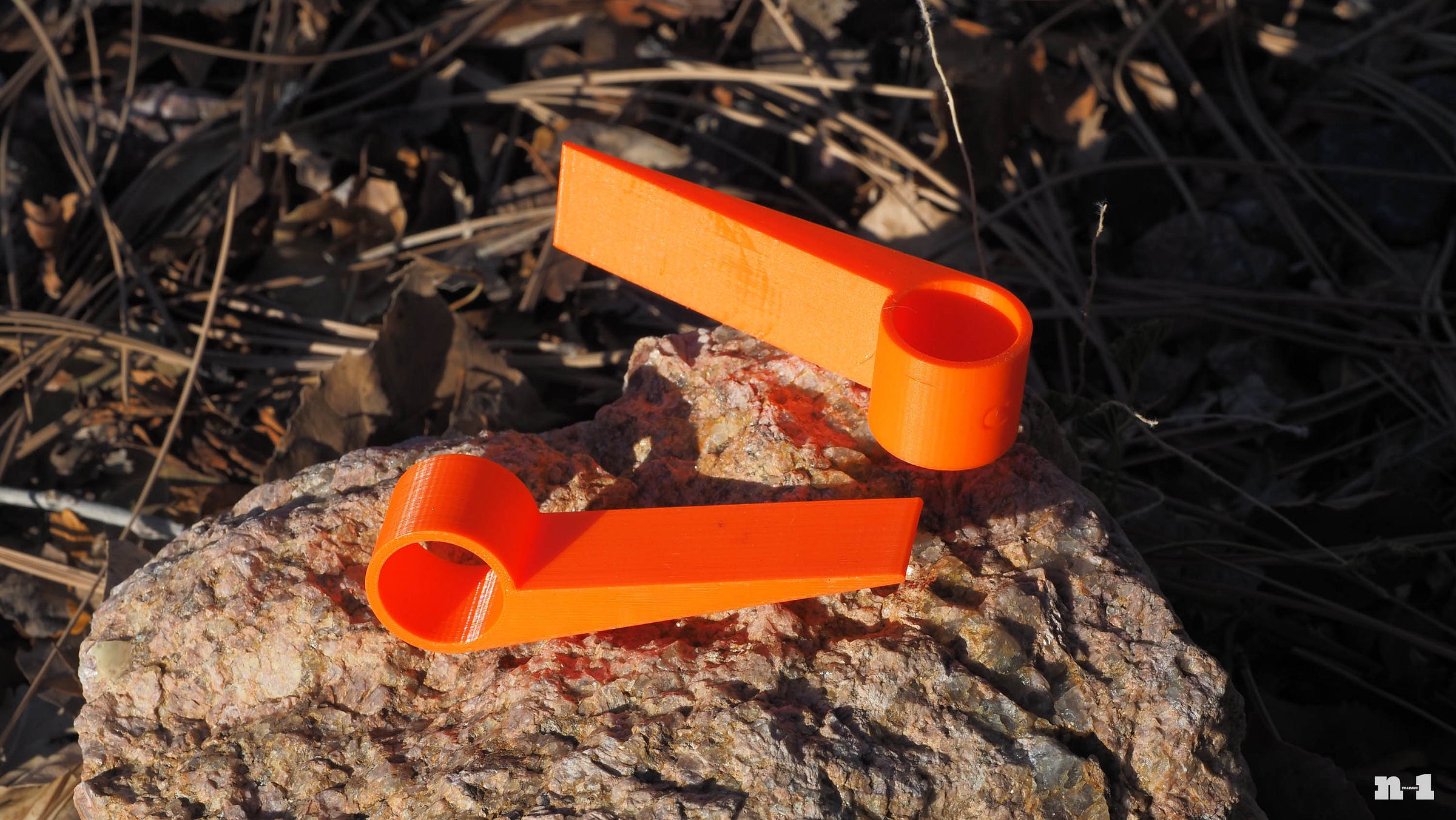
Heerschap perhaps could have avoided the situation by not making it easy for the thieves. This will undoubtedly come as a shock to some, but despite selling his products on Etsy, he also shares a lot of his design files on 3D printing sites, with the express hope that more people will use them.
“I love the idea of open source, and I love sharing my stuff to make it simpler. Part of the reason the store came around is because 3D-printing isn’t the easiest thing to get into. I had this idea that bike mechanics would have a 3D-printer in their shop and they could print out [my parts]. I didn’t need a third job.”
Those publicly available files have restrictions attach to them, including an explicit ban on commercial use – as in, feel free to print the stuff for you or your buddies, but printing copies to sell for profit is an absolute no-no.
As it turns out, Aliexpress thankfully has a mechanism for people to file for IP theft. Heerschap jumped through some hoops, and as far as I can tell, the offending listings have now been removed. Despite the financial pain and the annoyance, Heerschap has no intentions to cease sharing his work.
“You always realize when you put something out there like this, when you make it easier for someone to make something that you’ve made, it opens yourself up to that. I understand it’s going to cost me sales, but if those sales are from someone who has the capability to do this on their own and it makes their life easier, then I’m cool with it. But if I’m losing out on a sale because somebody else is downloading my stuff and selling it, then that’s not cool. But by the same token, I want it to be there for the people who are going to take the high road on this.
“It sucks that somebody’s out there ripping it off and selling my stuff without my permission and against the license, but the flip side is it’s still out there for people who are going to use it the way it was intended.”
Bravo, Chris. Keeping fighting the good fight.
Alright, on with this week’s happenings on the tech front.
In the news
Colnago Y1Rs aero road bike breaks cover, hints at more significant R&D
No big shocker here: that radical-looking Colnago Y1Rs aero road bike that I briefly discussed in last week’s newsletter is as real as can be, and the brand is claiming it’s – again, shocker – “the most aerodynamic UCI-compliant road bike in the World Tour.” According to Colnago, the Y1Rs offers a whopping 20-watt savings compared to the V4Rs model (measured at 50 km/h with a mannequin, two cages – but only one bottle – and weighted average drag between 0° and 10° yaw).
As anticipated, the features visible in that grainy leaked image all supposedly contribute to the bike’s aerodynamic efficiency, including the bayonet-style fork (which allows for a narrower and deeper total cross-section), the way the seat tube and down tube closely follow the outline of the wheels, and the radical one-piece Y-shaped carbon fiber cockpit.
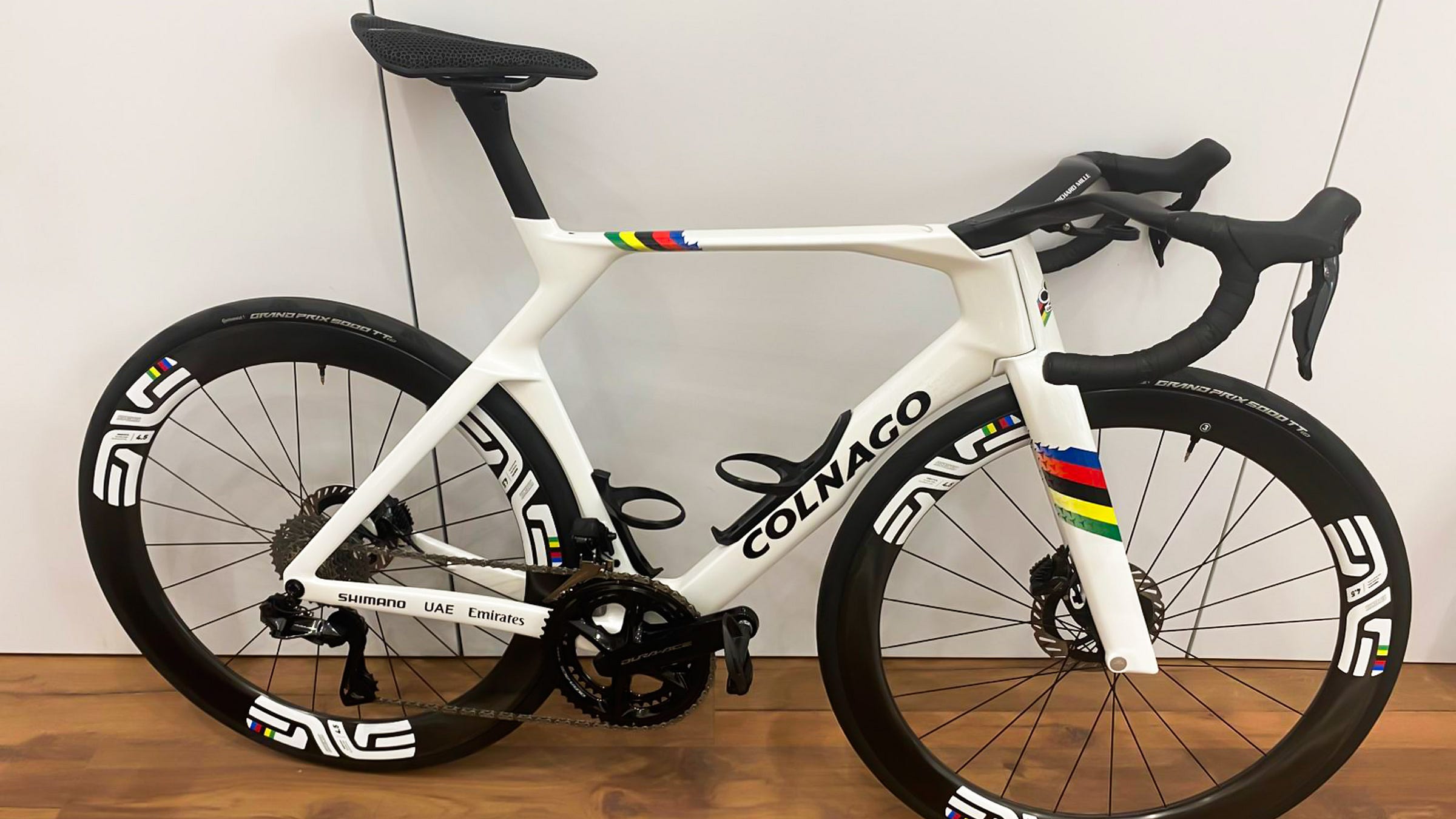
Some details are a little more unexpected, though, such as how that unusual offset seat cluster introduces a new flex zone to supposedly match the ride comfort of the V4Rs, and that the direct-connect handlebar (which looks like the rear end of the USS Enterprise from Star Trek) is apparently the stiffest setup Colnago has ever tested so as to better suit the needs of sprinters.
Frame geometry has grown more aggressive with a lower stack and steeper seat- and head tube angles, and although I find it impressive that Colnago has graced the Y1Rs with a dedicated fork rake for each frame size, it’s a bit disappointing that there are a mere five of those sizes in total – a far cry from the seventeen sizes Colnago offers for its classic Master lugged steel model.
Claimed frame weight isn’t bad at 965 g for a medium size, plus 450 for the matching fork for a grand total of 1,415 g – 242 g heavier than the V4Rs. However, the Y1Rs is also outrageously expensive with the frameset retailing for US$6,750 / €6,710 and complete bikes ranging from €12,300 to €16,500. Ouch.
Salient features aside, the bit I found most interesting in the official press release is Colnago’s approach to CFD and wind tunnel testing.
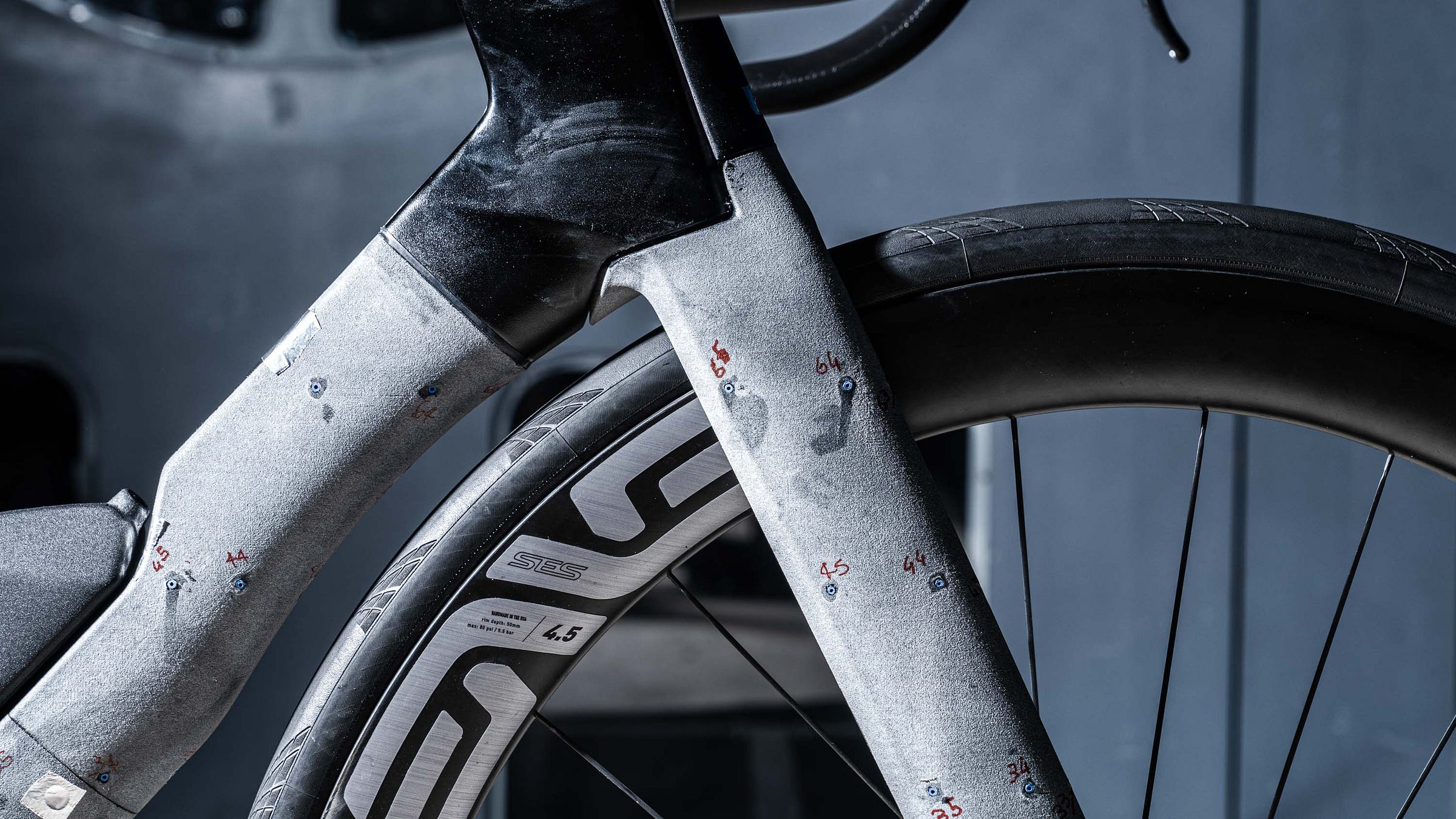
Full-sized 3D-printed models of the new bike were produced with an array of holes that were fitted with pressure sensors. By correlating the empirical measurements with the what the computer predicted, Colnago says the typical 30% disparity (?!) between what CFD models and wind tunnel measurements was cut in half, which apparently led to better models and a faster bike. If that’s the case, I can only imagine how this methodology might be used for any upcoming time trial developments.
Since a curve representing the likelihood of any of us normies spending appreciable time on one of these new Y1Rs machines will probably resemble the asymptote of zero, head over to the Colnago site for the full marketing spiel.
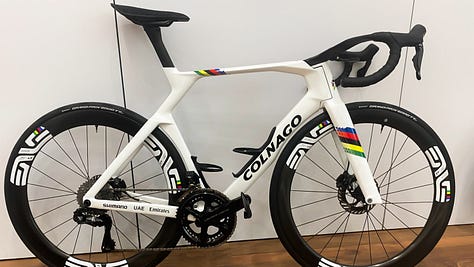
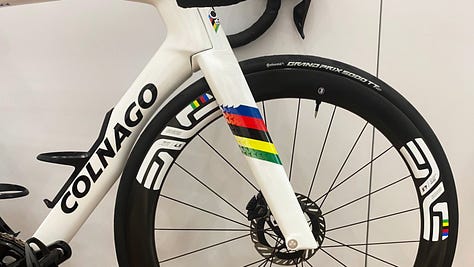
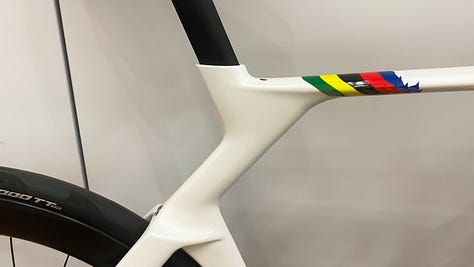
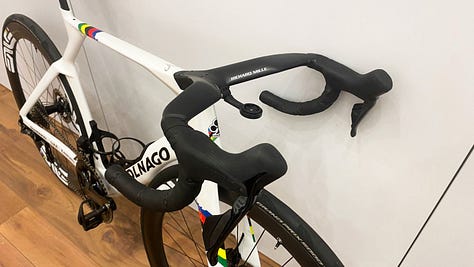
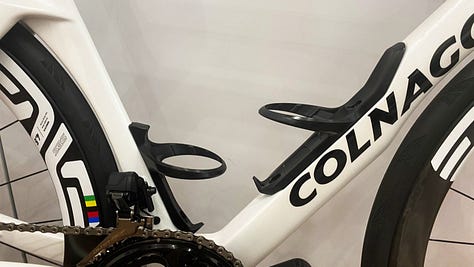
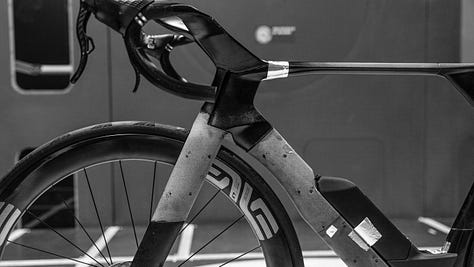
(Thanks to my old friend, Daniel Benson, for the image assist on this one.)
Ratio Technology comes out with a road dropper lever of its own
Hot on the heels of the integrated dropper lever OneUp Components that was announced last month, Ratio Technology has finished up its own. The concept is the same in that it’s a retrofit kit that integrates a dropper seatpost remote into older SRAM 11-speed mechanical left-hand road levers (and current-gen 12-speed SRAM Apex mechanical levers).
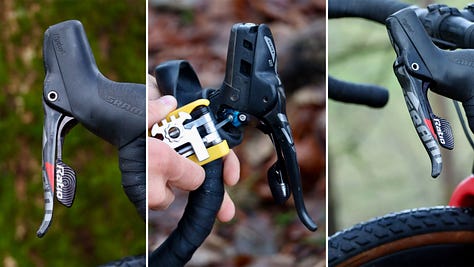
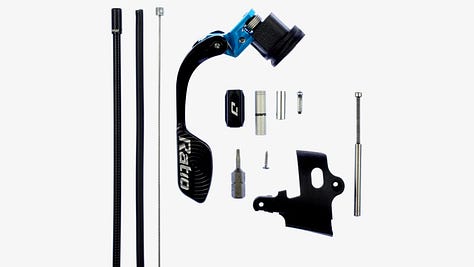
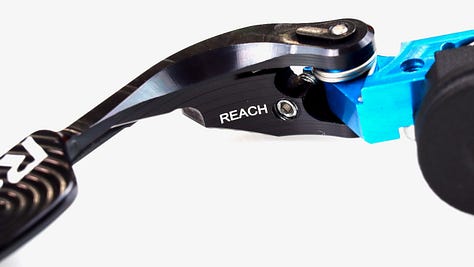
Ratio’s aptly named Drop Dropper Lever is different in that it uses a CNC-machined lever instead of what seems to be a cast or forged part in the OneUp kit, and it also appears much easier to install or replace a cable in the Ratio design with no subsequent disassembly required. Unlike the OneUp, though, the Ratio lever doesn’t directly incorporate a cable tension adjustment so you’ll likely want to run an inline adjuster.
Retail price is about the same at around US$90-95 / AU$137-147 / £70-75 / €85-90.
Dynaplug has some fun on its birthday
Tubeless tire plug specialist Dynaplug is celebrating its 10th anniversary with a special edition of the product that started it all: the Pill. As with the standard version, this one stuffs four plug insertion tubes (pre-loaded with the brand’s trademark brass-tipped plugs), an air stopper, and a tiny little knife into a weatherproof thread-together aluminum case. Instead of the usual plain silver anodizing, though, the anniversary edition sports a crazy rasta-inspired multi-color finish.
Revolutionary? Hardly. Fun? Definitely.
Retail price is US$69 – a US$4 premium over the standard Pill.
Argonaut announces a second set of wheels
As a follow-up to the gravel-oriented carbon wheels revealed a few weeks ago, Argonaut has announced a second set of own-branded carbon fiber wheels, this time for the road.
Argonaut says it intentionally went with a modest 43 mm-deep rim profile on the new R43 so as to make the new wheels more versatile in variable wind conditions. Built with DT Swiss 180 Center Lock hubs and DT Swiss Aerolite bladed stainless steel spokes, the claimed weight is admirably low at just 1,266 g. Interestingly, since Argonaut builds so much ride comfort directly into its frames, the rims have therefore been “engineered to be incredibly stiff,” which arguably also suggests these might not be the best aftermarket choice for someone who’s already on a rather firm-riding bike.
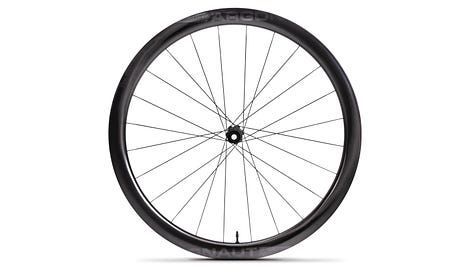
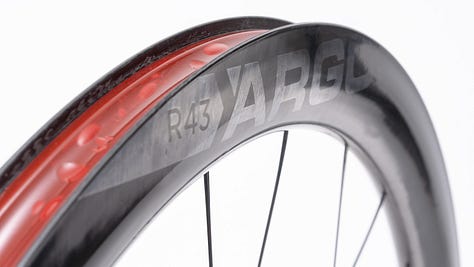

The 23.5 mm internal rim width suggests an ideal fitment for wider all-road tires (or even slightly narrower gravel ones), but the hookless format will invariably turn some folks off, as will the hidden internal spoke nipples. I’m not sure who’s actually manufacturing these rims, but Argonaut doesn’t appear to doing it in-house.
Retail price is also on the headier side of things at US$3,400.
Feedback Sports expands its range of torque tools
Feedback Sports recently ran such an aggressive blowout sale of its tool catalog lately that I began to wonder if the brand was getting out of the segment entirely. That apparently isn’t the case since Feedback just announced earlier this week a new portable torque tool called the Reflex Fixed Torque Bit Driver.
“Feedback Sports is more committed to tools now than ever,” said Feedback Sports marketing director Zack Vestal. “Bicycle tools is an important category for us and we’re growing our lineup, not reducing it. We have a number of new tools being introduced in the next few months and we have multiple new products and concepts on the horizon.”
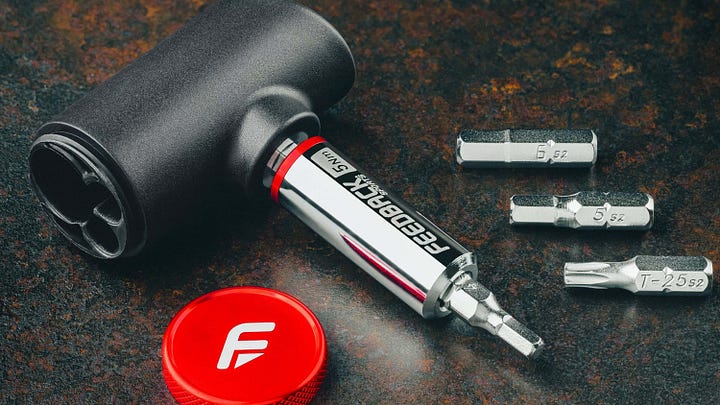
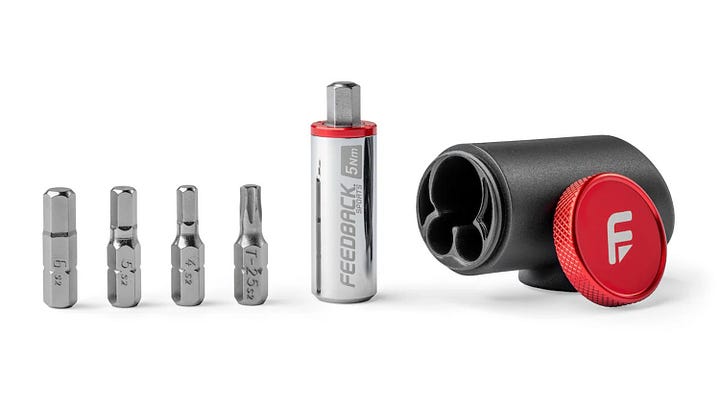
Fundamentally, Feedback’s new tool is a T-handle bit-based driver with an interchangeable preset torque insert that makes it difficult to over-torque a fastener. The torque insert looks similar to what Topeak uses on its Nano TorqBox and TorqBar range (Feedback says the two aren’t at all related), but what really sets the Feedback tool apart is its form factor. The torque insert is removable and fits inside the black plastic handle, and there’s also room for four bits. And despite the handle using a fair large diameter, the packed volume looks to be impressively small, so much so that I could easily see this making its way into a lot of on-bike (or at least travel) tool kits.
Retail price is pretty reasonable, too, at US$35.
Elite announces Zwift Cog and Click virtual shifting compatibility
Elite just announced that its entire range of indoor trainers will soon be compatible with Zwift’s Cog and Click single-sprocket cassette replacement kit, starting with Direto XR and Direto XR-T this week, followed by the Justo, Justo 2, and Avanti in “early 2025”, and wrapping up with the Suito, Suito-T, Direto, Direto X, and Direto XR Team another few months after that. The firmware updates will allow for virtual shifting using Zwift’s two-button handlebar controller.
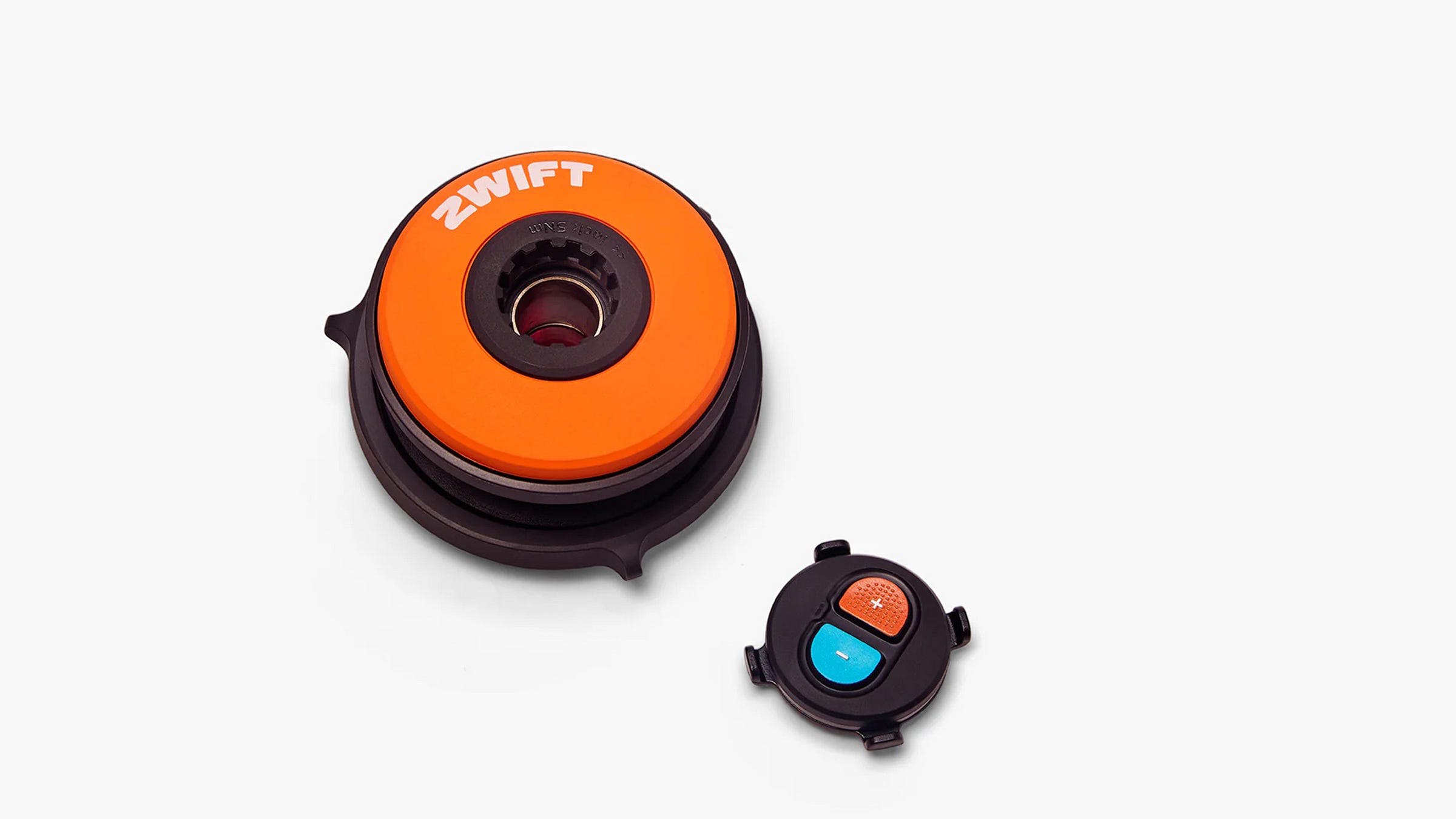
So what, you’re wondering? Virtual shifting is kind of fun and all, but what makes Cog and Click such an interesting hardware development for the indoor cycling juggernaut is how much it simplifies hardware compatibility. Whereas indoor riding early on in the Zwift days was dominated by road bikes running 11-speed drivetrains, now things are all over the board – and that doesn’t even take mountain bikes into account. With Cog and Click, you just need to physically shift your rear derailleur close enough to the middle of the range so it runs quietly on the Cog… and you’re done. The virtual shifting – made possible via the electromagnetic brake on the trainer – takes care of the rest with 24 different “gears”, not to mention quieter running (given the consistently straighter chainline) and reduced wear on your expensive multi-ratio cassette.
So nope, not really a huge deal, but still kinda neat.
Selle Italia commits to Flite and Turbo
I still remember seeing the original Selle Italia Flite for the first time on the glass counter of Visentin Bike Pro Shop in Oyster Bay, New York. It was revolutionary for the time, a dramatically pared-down interpretation of what a road racing saddle could be: Light, expensive, beautiful.
I desperately wanted one.
Selle Italia in recent years has periodically offered the original Flite – now called the Flite 1990 – in an “on demand” basis, complete with the same waffle-pattern fiber-reinforced nylon shell, sparse padding, genuine leather cover, and titanium rails. Along with that, the iconic Italian saddle brand has also offered the original Turbo (as the Turbo 1980) with the same period-correct construction. Now, though, the company has apparently seen enough of a positive response that both are now “officially part of the collection.”
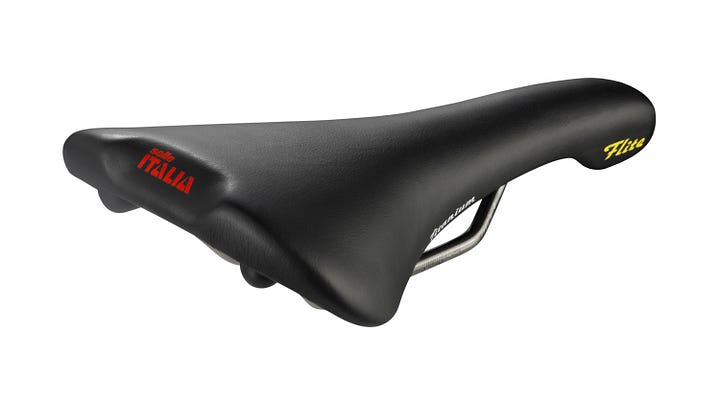
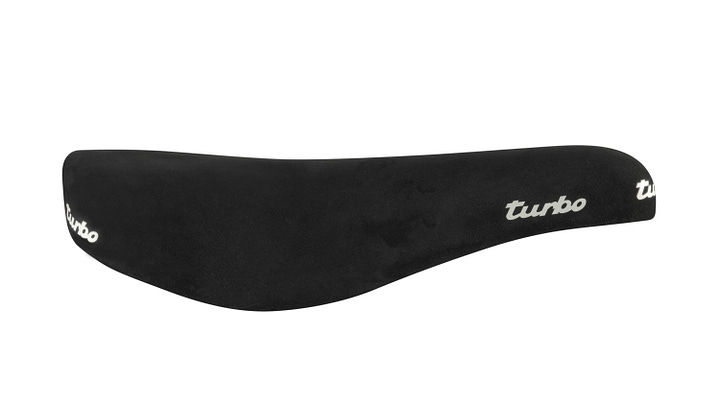
Granted, saddle technology has certainly come a long way in the last 3 1/2 decades so I can’t imagine the Flite 1990 can come close to matching the comfort of a modern design (and especially so for the Turbo 1980). But wow, does seeing these stir up the feelings. Be still my beating heart.
Retail price is US$120 / €120 for the Flite 1990 and US$120 / €105 for the Turbo 1980.
TL;DR review: Bookman Volume 1500 headlight
It’s only a few more days before the pendulum starts swinging in the other direction and our days start getting longer again. The sun is still going down awfully early, though, which means we’re nowhere near the point of not needing lights.
Most of us have heard of the bigger brands: Niterider, Light & Motion, Lezyne, MagicShine, Outbound Lighting, and so on. But Bookman? Probably not, but barring a few notable oversights, I think it’s one that’s worth adding to your list.
The Volume 1500 is the brand’s top offering, with 1,500 lumens of claimed output, a replaceable 4,000 mAh battery, USB-C charge port, a four-LED charge indicator, a Garmin-compatible quarter-turn mounting interface, daytime flash and lock modes, and a slick mechanical dial to quickly switch between power settings (and also provides the inspiration for the light’s name).
The squarish aluminum body is about 120 mm-long (a tad shorter than a gas station Snickers candy bar), and actual weight is 201 g. Bookman includes with the Volume 1500 a universal strap-type handlebar mount, a GoPro-style mount, and a USB-C charge cord, and retail price is US$150 / AU$200 / £130 / €150.
There are two things that set the Volume 1500 apart in my view: run time and the dial interface.
Bookman claims three hours of run time on the highest-power setting, but I only clocked 2:20 after a full charge before the unit shut off. Needless to say, that’s well short of the claimed figure, but it’s nevertheless an impressive figure considering the unit’s compact size and high output.
I unfortunately don’t have the ability to physically verify the claimed lumens – turns out integrating spheres are a little pricey – but subjectively speaking, the Volume 1500 seems at least as bright as other 1,500-lumen lights in my stable. The beam pattern is nominally rectangular with soft edges, a subtly brighter center, and a very even spread with heaps of peripheral illumination, and on full power, I found there’s enough oomph to use the Volume 1500 as my main bar-mounted light on more XC-style trail rides.
The lack of a sharp upper cutoff makes the Bookman 1500 less than ideal for road riding (as compared to something like the Outbound Lighting Detour), but the upside is that there’s no disadvantage to orienting it upside-down on some sort of combo-style computer mount. A couple of small windows on either side of the lens provides decent side visibility, too.
Further helping to extend the run time is that slick control dial – easily my favorite feature of the Volume 1500. Almost without exception, bike lights use a single button to switch modes. Better ones feature a simplified “race” mode so you’re only toggling between a single high and a single low setting, but otherwise you’re usually cycling through way too many modes to get to the one you want (and more if you overshoot the one you want). With the Bookman, you just turn the dial between five positions, each with a strong detent with lots of tactile feedback. It’s gloriously analog: incredibly intuitive and quick to use on the fly (even if the light is mounted on your helmet). It’s a good thing Bookman has patented the idea because it’s certainly worth stealing.
If you’re one of those folks that relishes a physical volume knob in your car instead of buttons or a capacitive slider, this is the light for you.
If and when you do run out of juice, you’re thankfully not out of options. The USB-C port supports pass-through charging if you want to attach an external battery pack, and since Bookman uses a conventional 21700-size battery pack, you can also get one or two pre-charged spares to bring with you. Even better, those batteries are not only readily available and relatively inexpensive, but I’ve also found some with larger capacities than what Bookman provides, which should yield even longer run times.
There are unfortunately a few downsides, one of which is pretty major in my opinion.
Bookman doesn’t fit the Volume 1500 with any sort of hood, and the way the lens is designed, there’s way, way too much flare that really messes with your night vision. It’s a glaring oversight – pun intended – that leaves a big stain on what is otherwise a pretty stellar little light. I was able to knock it down with some carefully applied paint marker, but that’s obviously more of a bodge than a proper fix (yet another reason for me to bite the bullet and get myself a 3D printer).
The Garmin-style interface could use some work, too. The included mounts attach nice and tight, but when fitted to other Garmin-compatible mounts, the fit is disconcertingly floppy. I constantly worried about the thing falling off, though it thankfully never did.
Overall, I’ve been mighty impressed with what Bookman brings to the table with the Volume 1500. It offers a longer run time and is less expensive than lights with similar outputs from major brands, the replaceable battery can extend that time even further, the beam pattern is excellent (at least for trail use), and the control dial is simply brilliant.
But man, Bookman desperately needs to fix the lens flare issue.
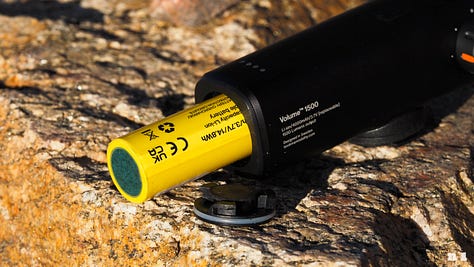
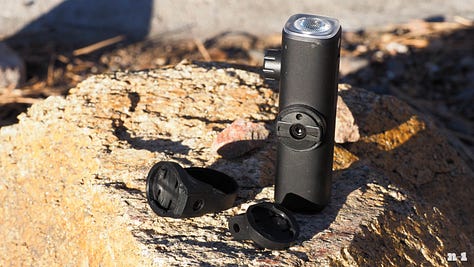
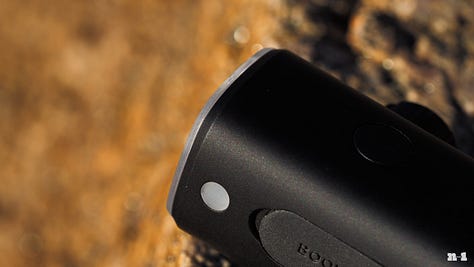
Tech tip of the week: Cut down on snow and ice build-up during your next commute
I have a lot of fond memories of my nearly 14 years living in the American midwest: rollercoaster-like singletrack, stopping at cider mills for fresh mid-ride donuts, so many lifelong friends and memories made.
But you know what I don’t miss? Winter commutes.
If only out of pure necessity, I rode my (road!) bike everywhere throughout college, rain or shine, day or night, snow or ice. I had good front and rear fenders, but still tires no wider than about 30ish mm with virtually no tread, and to this day I’m convinced it’s why I’m reasonably comfortable with my bike sliding around a little beneath me. One key lesson I learned that sticks with me is how to minimize ice and snow buildup when riding in genuinely nasty conditions, and it thankfully involved no cost whatsoever (which was good considering I was in college and had no money, anyway).
When I left for class in the morning, I’d often arrive with the underside of my bike caked in frozen slush. It was annoying, though at least fun to knock off at the bike rack. When I eventually made my way back home later in the day, however, I invariably had a lot less buildup than before (and before you think that it was due to warmer daytime temps, I assure you Michigan winters back then never got warm and the sun never came out).
What I eventually discovered was that I was getting more snow and ice build-up on my bike because it was briefly melting on my still-warm bike before re-freezing. But on the way home, the bike was already pre-chilled so anything flying off of the wheels was less prone to sticking.
I may no longer have to regularly commute in those sorts of conditions, but the past decade of fat biking has only reinforced my original hypothesis. If I rode straight from the house when the bike was still warm, I invariably end up with lots of build-up. But if I instead drive somewhere first so that the bike can pre-chill, I often arrive back to the car with a bike that’s nearly as clean as when I left.
Granted, this obviously won’t do anything to protect your bike against road salt, and if what you’re riding through is already partially melted (I’m talking about you, slushy Midwest yuckiness), nothing is really going to save you. I’m also cognizant of the fact that it’s not always practical to pre-chill your bike, particularly if you live or work somewhere with a high rate of bicycle theft and don’t have the luxury of a secure place to let your prized possession acclimate to ambient temperatures before hopping on.
That all said, if you do have a situation that allows for it, give it a shot. You might be pleasantly surprised.
That’s a wrap for another n-1wsletter! Hope you found some useful info in here, and if you’ve got any suggestions for future editions, I’m all ears.
Before I sign off, just a quick reminder: N-1 is solely funded exclusively by your subscription fees, always and forever. You may have noticed that there are zero ads here, nor are there any icky affiliate links, weird collaborations, or “strategic partnerships.” There also are no phantom investors of any kind, nor any smoke and mirrors in general.
I’ve managed to survive in this industry for nearly 20 years at this point solely on the strength of my reputation and integrity, and that’s not something I’m about to risk now. These newsletters will remain free to everyone, but please consider upgrading to a paid sub (if only so you can gain full access to all the rest of the content I’m producing here).
Ok, that’s all for real now! See you all after the weekend.


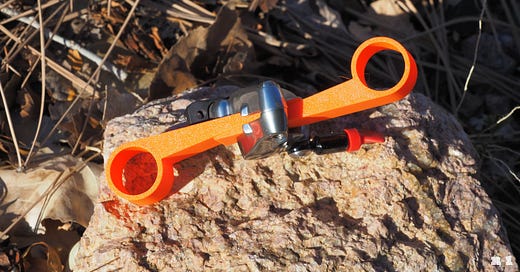



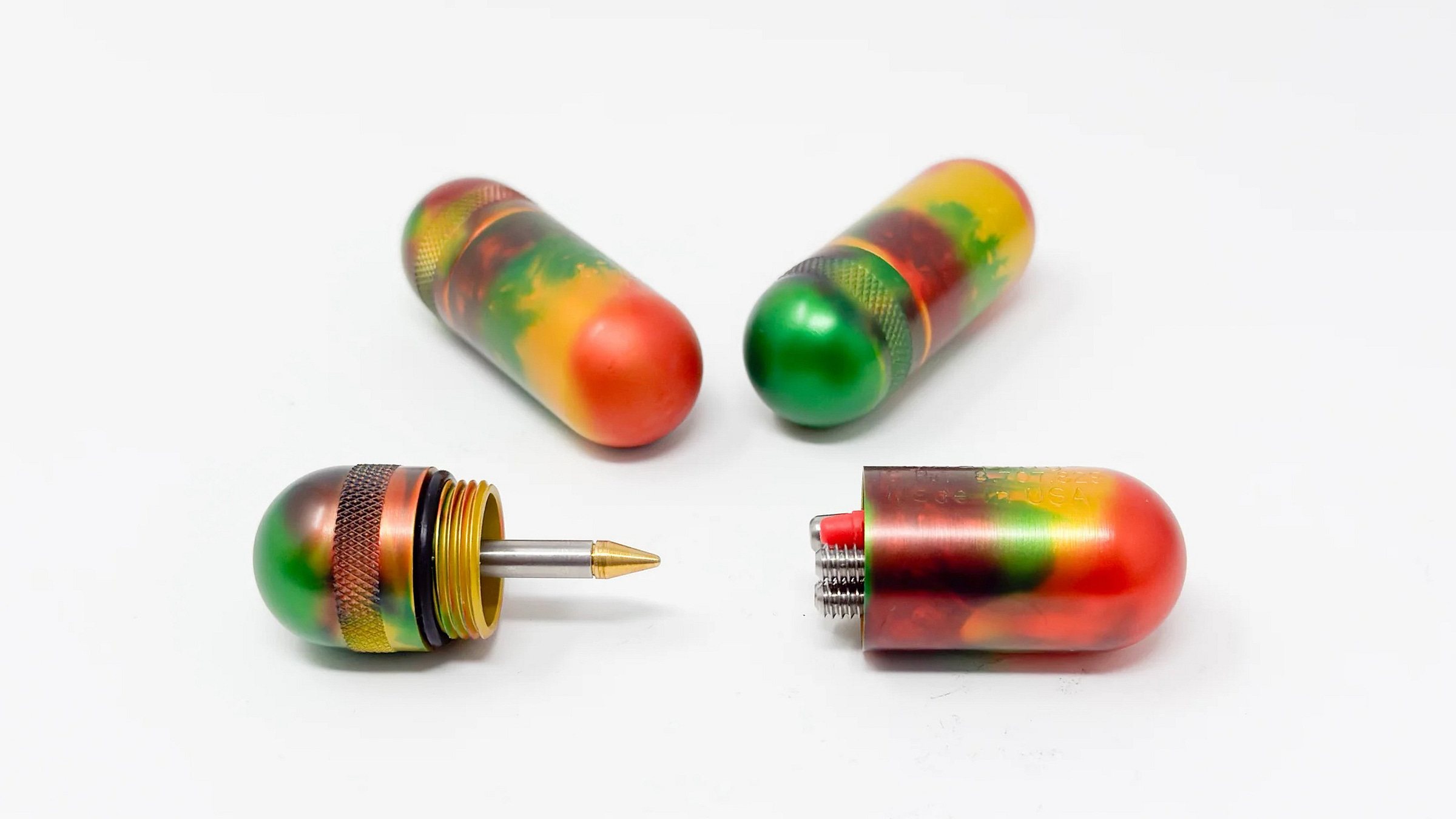
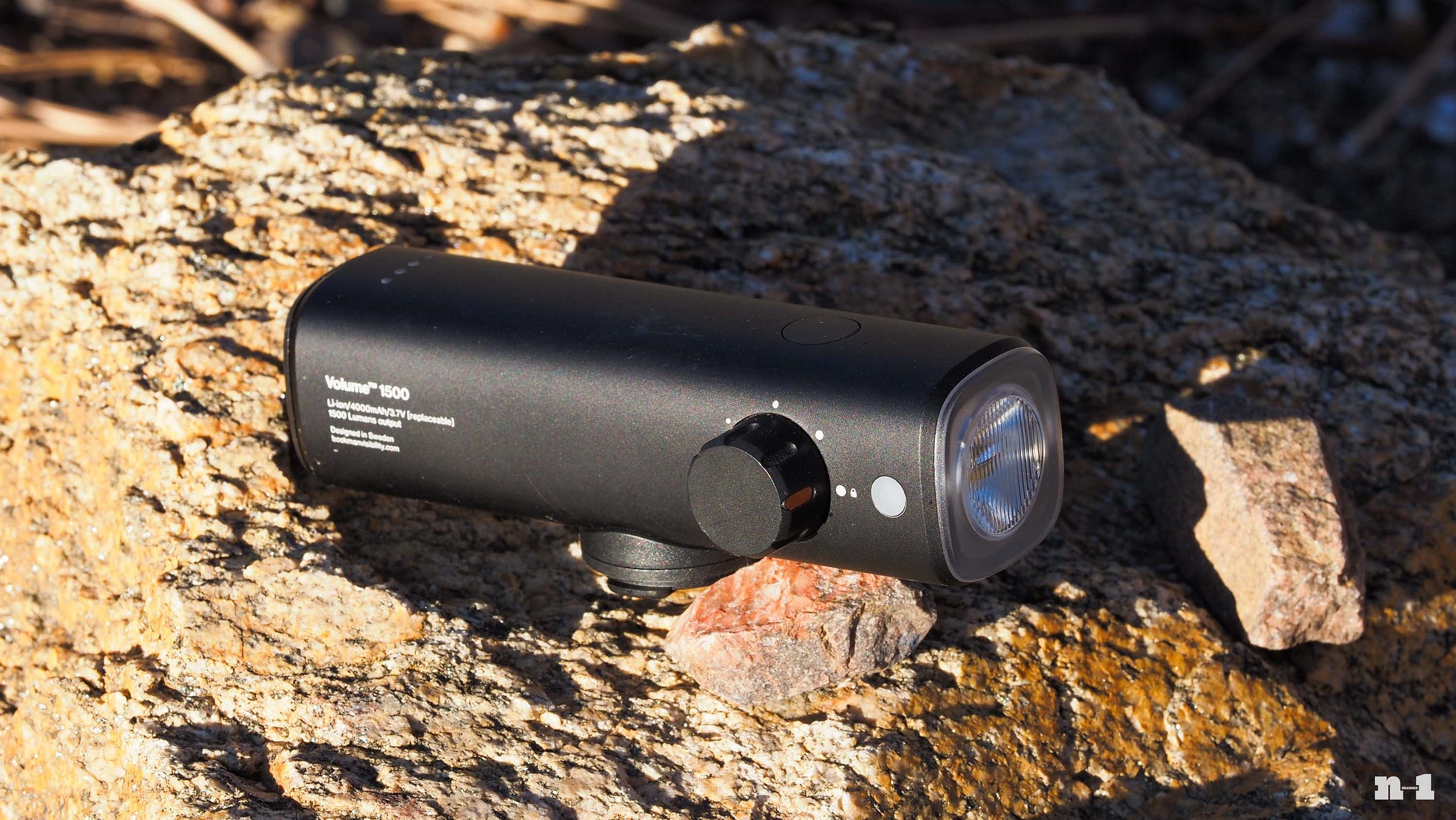
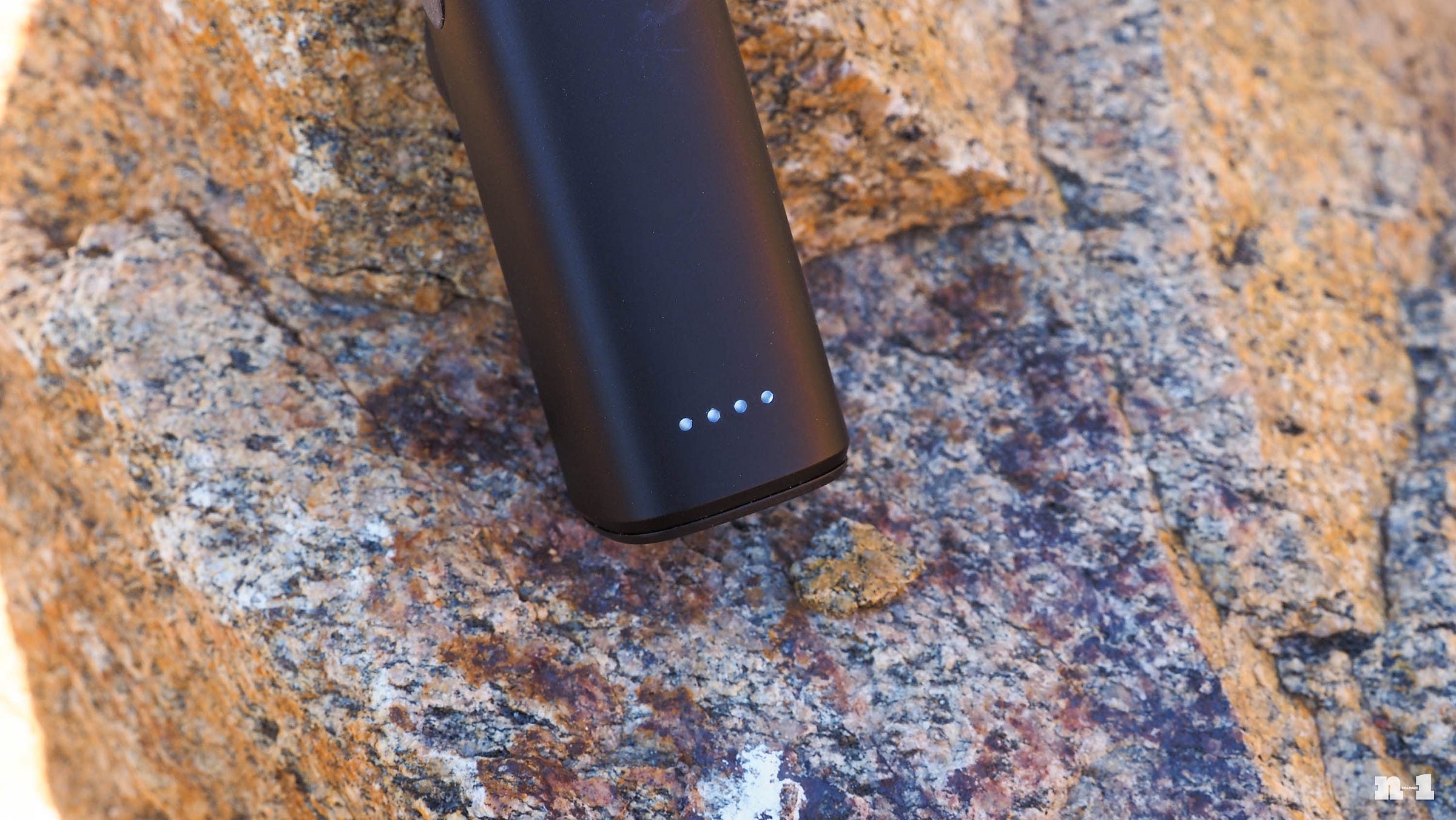

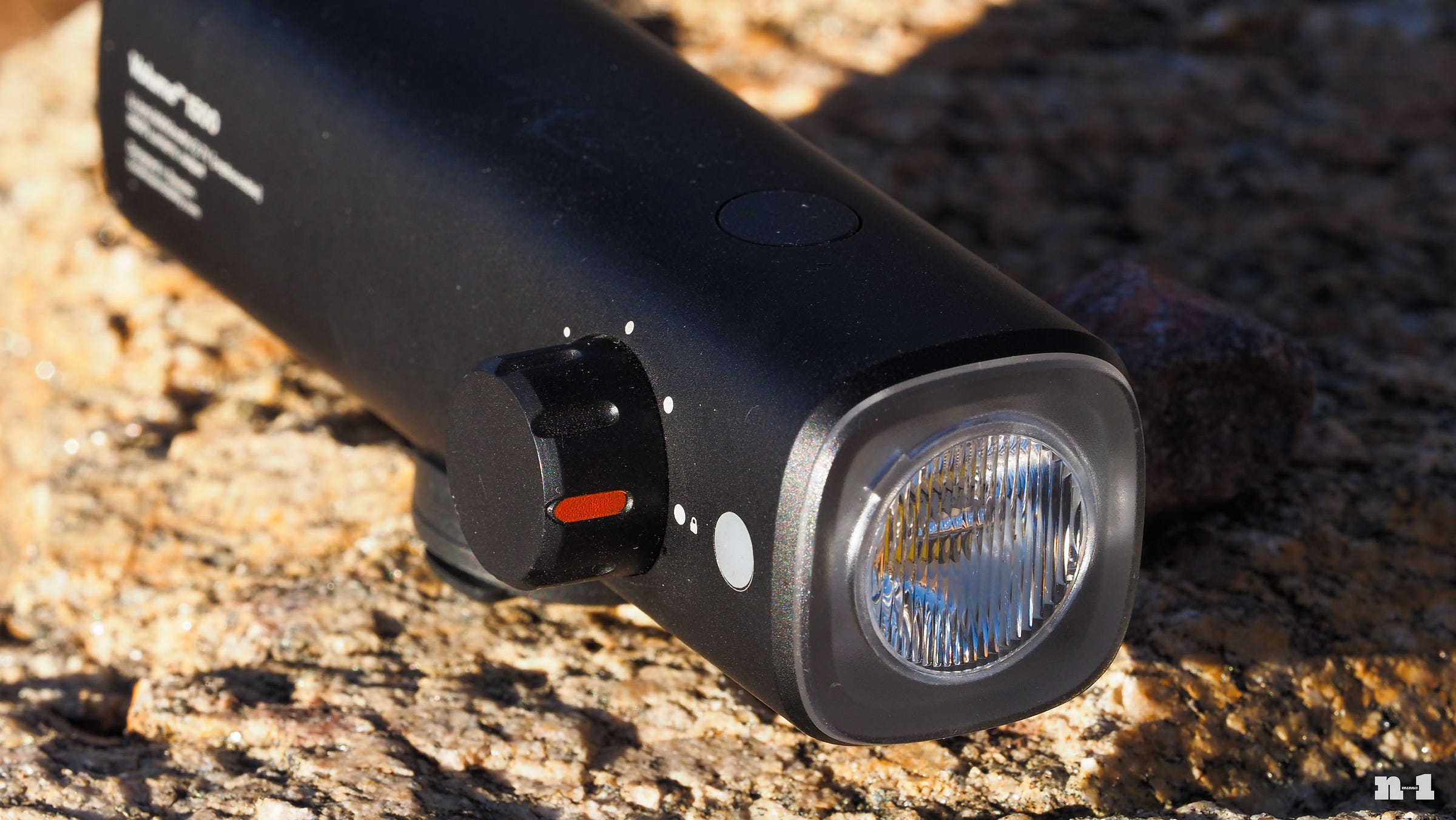

It’s a shame that people are ripping off Chris. I’ve bought a bunch of his gadgets and love them all. They are well thought out.
One thing to consider: if a product design isn’t patented at all, especially in the country of production or sale, there isn’t really anything illegal about copying it. Getting patents for those useful tools would probably necessitate a much higher price in order to recoup costs though.